Removal Procedure
- Disconnect the negative battery cable. Refer
to
Caution: Unless directed otherwise, the ignition and start switch must be in the OFF or LOCK position, and all electrical loads must be OFF before servicing any electrical component. Disconnect the negative battery cable to prevent an electrical spark should a tool or equipment come in contact with an exposed electrical terminal. Failure to follow these precautions may result in personal injury and/or damage to the vehicle or its components.
in General Information. - Remove the radiator and the shroud. Refer to Radiator Replacement (P72) in Engine Cooling.
- Remove the engine/transmission oil cooler.
- Remove the air conditioning compressor, if equipped. Refer to Compressor Replacement (P72) in HVAC.
- Drain the cooling system. Refer to Draining, Filling, Recovery of Cooling System in Engine Cooling.
- Remove the oil pump drive. Refer to Oil Pump Drive Replacement.
- Remove the cylinder head. Refer to Cylinder Head Replacement.
- Remove the generator lower bracket.
- Remove the front cover. Refer to Front Cover Replacement.
- Remove the fuel pump (lift pump).
- Remove the hydraulic lifters. Refer to Valve Lifter Replacement.
- Remove the timing chain and the camshaft sprocket. Refer to Timing Chain and Sprockets Replacement.
- Remove the bolts and the thrust plate.
- Carefully pull the camshaft from the block in order to avoid damage to the camshaft bearings.
- Remove the spacer, if necessary.
- Clean, inspect, repair or replace the camshaft and its related components.
Important: If the timing chain, the timing gears, the front cover, the crankshaft position sensor, the crankshaft, or other components affecting the timing are replaced, the TDC offset into the PCM will need to be reprogrammed.
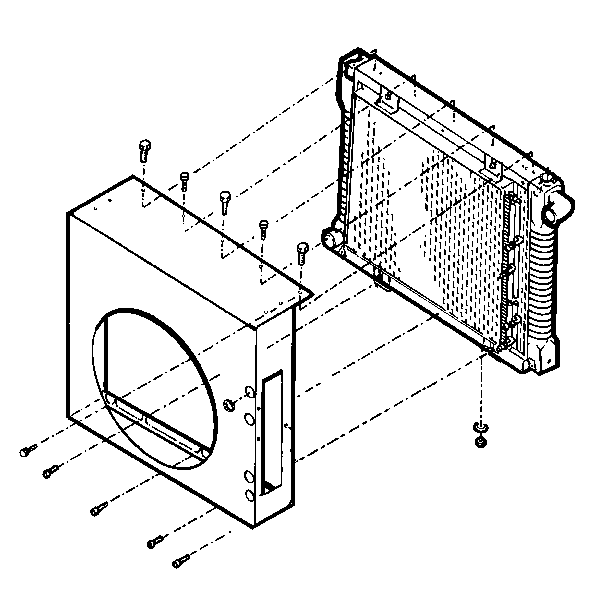

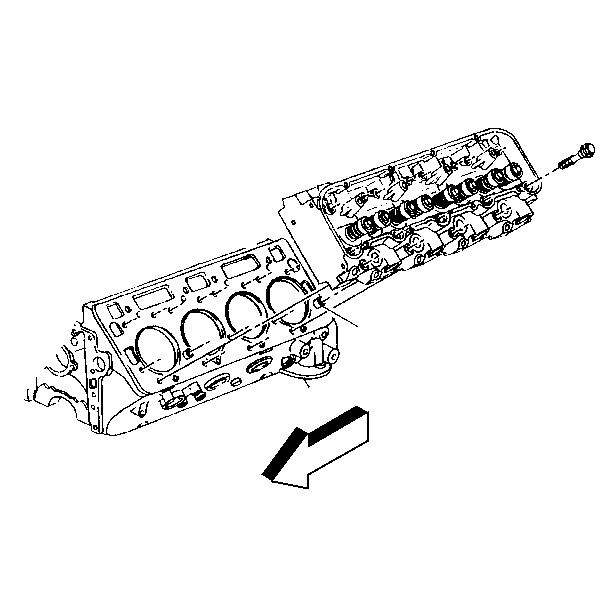
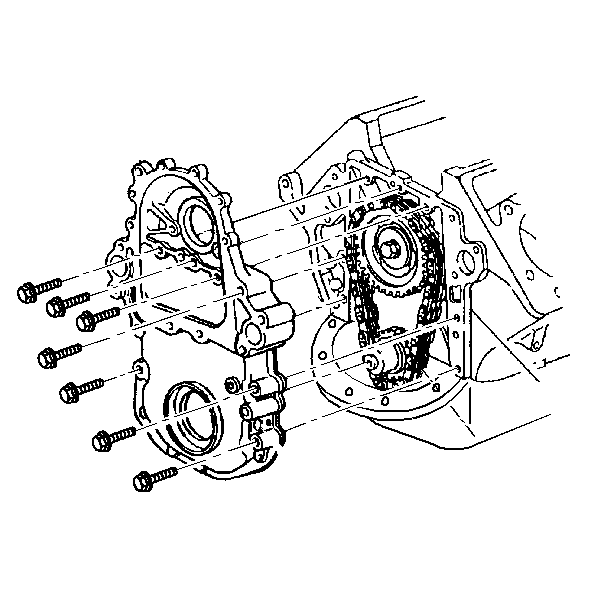
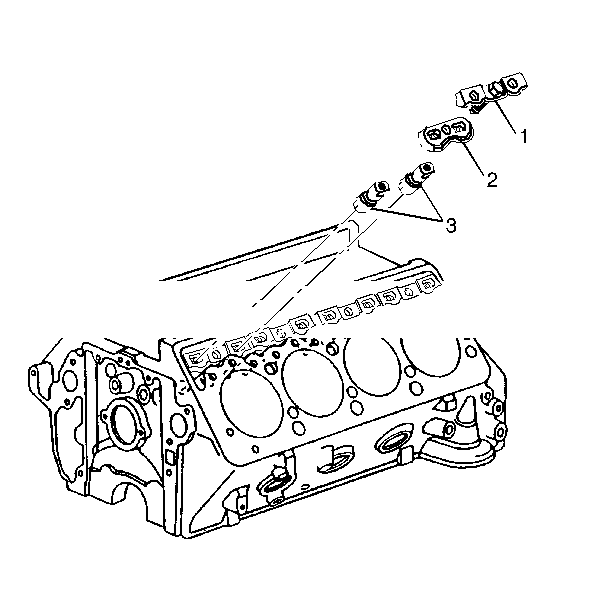
Place the lifters in an organizer rack. The lifters must be installed in the same bore from which they were removed.
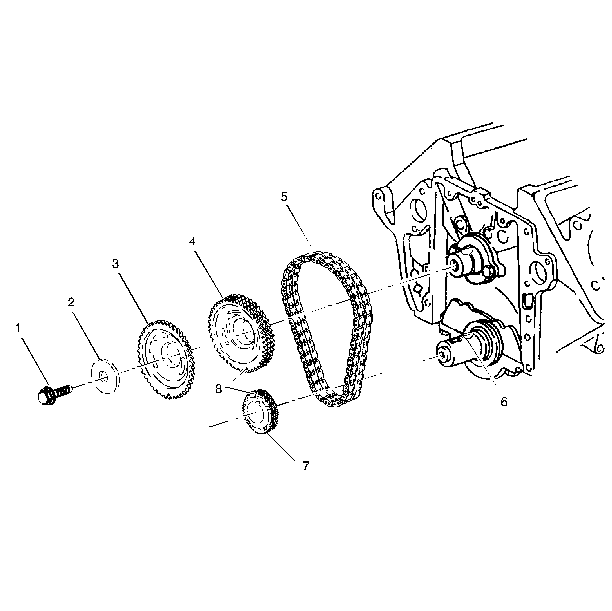
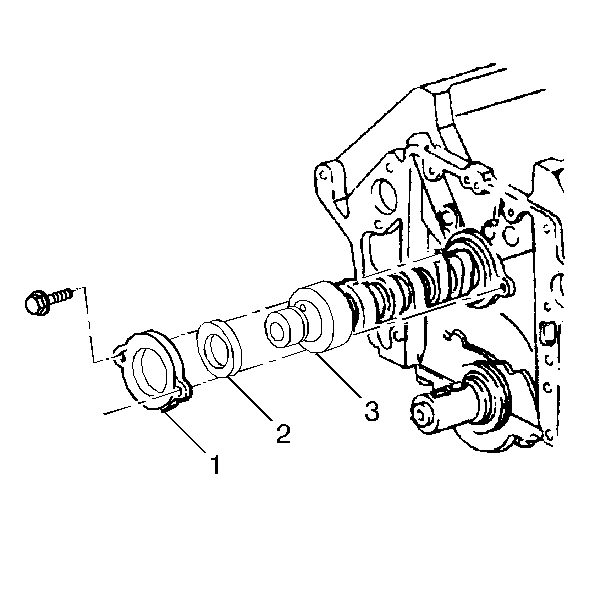
Installation Procedure
- Install the spacer with the ID chamfer toward the camshaft.
- Install the camshaft.
- Install the thrust plate and the bolts.
- Install the timing chain and the camshaft sprocket.
- Align the timing marks. Refer to Timing Chain and Sprockets Replacement.
- Install the hydraulic lifters.
- Install the cylinder head. Refer to Cylinder Head Replacement.
- Install the front cover. Refer to Front Cover Replacement.
- Attach the lower generator bracket.
- Install the oil pump drive. Refer to Oil Pump Drive Replacement.
- Install the air conditioning compressor, if equipped. Refer to Compressor Replacement (P72) in HVAC.
- Install the engine/transmission oil cooler.
- Install the radiator and the shroud. Refer to Radiator Replacement (P72) in Engine Cooling.
- Connect the negative battery cable.
- Fill the cooling system with the proper quantity and grade of coolant. Refer to Draining, Filling, Recovery of Cooling System in Engine Cooling.
- Evacuate and charge the air conditioning system, if equipped. Refer to Charging in HVAC.
Important: When a new camshaft is installed, replace the engine oil, the oil filter and all the hydraulic lifters.

| 2.1. | Use a high viscosity oil with zinc additive (GM P/N 12345501 or the equivalent) to coat the camshaft lobes. |
| 2.2. | Lubricate the camshaft bearing journals with engine oil. |
| 2.3. | Carefully insert the camshaft into the block in order to avoid damage to the camshaft bearings. |

Tighten
Tighten the bolts to 23 N·m (17 lb ft).
Notice: Use the correct fastener in the correct location. Replacement fasteners must be the correct part number for that application. Fasteners requiring replacement or fasteners requiring the use of thread locking compound or sealant are identified in the service procedure. Do not use paints, lubricants, or corrosion inhibitors on fasteners or fastener joint surfaces unless specified. These coatings affect fastener torque and joint clamping force and may damage the fastener. Use the correct tightening sequence and specifications when installing fasteners in order to avoid damage to parts and systems.

The used lifters must be installed in the same bore from which they were removed. Refer to Valve Lifter Replacement.



